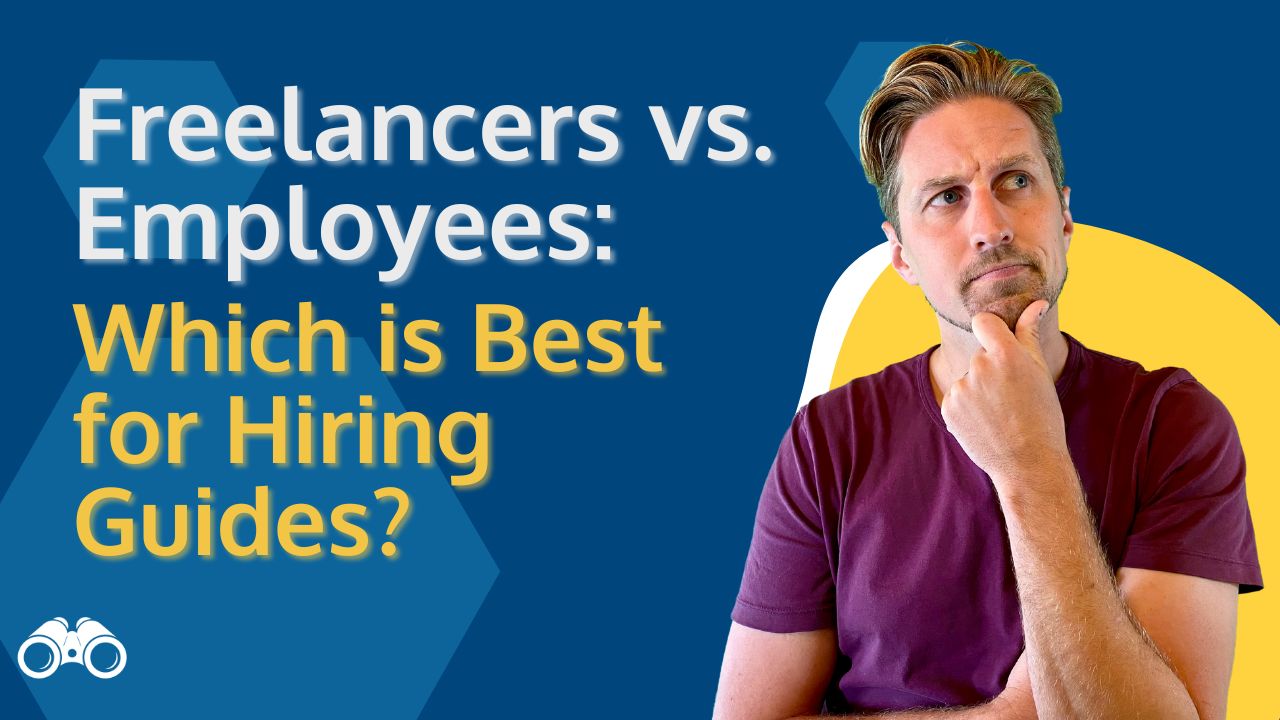Freelancers vs. Employees: Which is Best for Hiring Guides?
This week, we’re exploring the pros and cons of each option and discussing some important factors to consider based on your geography and business size.
Legal Considerations
Before we dive into the details, it’s essential to acknowledge the legal considerations involved in this decision. While I’m not a lawyer and this article should not be taken as legal advice, it’s crucial to discuss these matters with your legal counsel to ensure compliance with relevant laws and regulations.
Freelancers vs. Employees: Understanding the Difference
The primary difference between a freelancer and an employee lies in the degree of control and independence they have. A freelance tour guide can work for multiple tour companies, choose which contracts to accept, and maintain a certain level of autonomy in how they carry out their work. They are responsible for filing their own taxes and are typically hired for specific tours or seasons, without benefits like health insurance or paid leave.
In contrast, an employee tour guide works for a single tour company, which has greater control over their pay, schedule, training, and tour delivery methods. Employees often receive benefits and are subject to tax withholding by the company, resulting in a more stable but less flexible working arrangement.
Pros and Cons of Hiring Freelancers
Pros:
1. Flexibility: Freelancers allow you to quickly scale your workforce up or down based on seasonal demands or project-specific needs, without the long-term commitment of an employee.
2. Cost-effectiveness: Working with freelancers can be more cost-effective, as you don’t need to provide benefits or pay certain taxes.
3. Specialized skills: Freelancers with specific knowledge, skills, or language abilities can be an asset to your team.
4. Reduced administrative burden: Freelancers often require less paperwork and administrative tasks related to payroll, benefits, and compliance with labor laws.
Cons:
1. Limited control: While you can set expectations and deadlines, freelancers ultimately have control over their schedule and how they deliver tours.
2. Variable availability: Freelancers may juggle multiple clients, which can affect their availability and prioritization of your needs.
3. Onboarding and training challenges: Each new freelancer may require additional time to understand your operations and standards, and mandatory training is not possible for contractors.
4. Inconsistent team dynamics: Frequent changes in tour leaders can lead to inconsistencies in quality, team dynamics, and company culture.
Pros and Cons of Hiring Employees
Pros:
1. Training and quality control: With employee tour leaders, you can implement rigorous training programs and quality control measures to ensure a consistent guest experience.
2. Team cohesion and cultural alignment: Full-time tour leaders contribute to a unified company culture centered around your vision and best practices.
3. Long-term investment in loyalty: Investing in your employees’ professional growth and development fosters loyalty and can reduce turnover costs.
4. Consistency: Employees’ dedication allows you to evaluate performance against well-defined standards, resulting in a more consistent, on-brand experience for guests.
Cons:
1. Investment required: Hiring employees may involve a significant financial and time commitment, including contracts, salaries, benefits, training, and tax withholding.
2. Risks of a bad hire: A poor hiring decision can drain resources and require considerable effort to manage and replace.
3. Regulatory compliance: Managing employees means adhering to various labor laws and regulations, which can be complex and time-consuming.
4. Fixed labor costs: Employees represent a fixed cost, even during off-peak seasons or downturns, which can strain budgets.
Finding the Right Balance
Ultimately, the decision to hire freelancers, employees, or a combination of both depends on your company’s vision, values, goals, and the market dynamics in your location. It’s essential to make an informed choice that aligns with your business model and stage of growth.
If you opt for a predominantly freelance team, consider implementing rigorous contracts with clear expectations and quality standards, as well as tiered contracts based on past performance. You can also build loyalty with freelancers by offering competitive pay, training, and professional development opportunities, even if they work with other tour companies.
As your business grows and your resources allow, shifting towards a primarily employee-based team can help create a guest-focused culture centered around your values, driving a more consistent experience for guests regardless of which tour leader they have.
The Bottom Line
Your tour leaders, guides, and experience hosts are some of your most valuable assets in creating unforgettable experiences for your guests. Whether you choose to hire employees, contractors, or a mix of both, making the right decision is crucial for the success of your tour business. By weighing the pros and cons, considering your unique circumstances, and seeking guidance from legal professionals, you can build a team that delivers exceptional guest experiences and helps your business thrive.




